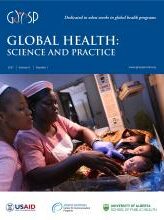Research & Evidence
Expanding Contraceptive Method Choice With a Hormonal Intrauterine Device: Results From Mixed Methods Studies in Kenya and Zambia
This article concludes that expanding hormonal IUD access through the public sector shows promise to increase contraceptive use and continuation in low- and middle-income countries. Efforts to strengthen availability should consider demand and engage directly with various communities, including youth, around the availability of a new long-acting option.
Note: Since this research was published, the World Health Organization has clarified that the nomenclature for “hormonal IUS” (intrauterine system) should be updated to “hormonal IUD” (intrauterine device). This article has been updated to exclude the use of “IUS,” and MOMENTUM has begun using “hormonal IUD” to refer to the category of IUDs that release the hormone levonorgestrel.
Download Article from Global Health: Science and Practice


